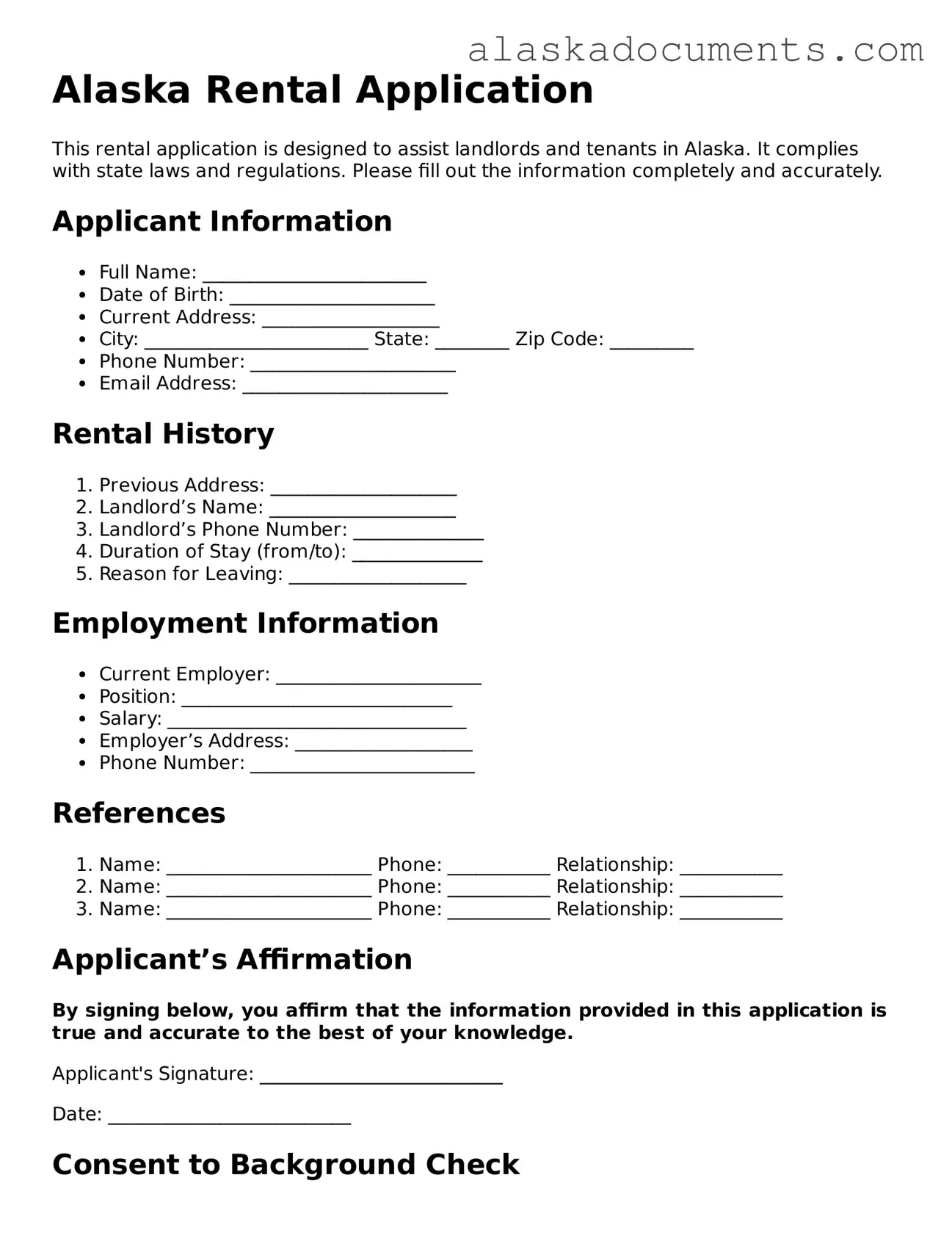Alaska Rental Application
This rental application is designed to assist landlords and tenants in Alaska. It complies with state laws and regulations. Please fill out the information completely and accurately.
Applicant Information
- Full Name: ________________________
- Date of Birth: ______________________
- Current Address: ___________________
- City: ________________________ State: ________ Zip Code: _________
- Phone Number: ______________________
- Email Address: ______________________
Rental History
- Previous Address: ____________________
- Landlord’s Name: ____________________
- Landlord’s Phone Number: ______________
- Duration of Stay (from/to): ______________
- Reason for Leaving: ___________________
Employment Information
- Current Employer: ______________________
- Position: _____________________________
- Salary: ________________________________
- Employer’s Address: ___________________
- Phone Number: ________________________
References
- Name: ______________________ Phone: ___________ Relationship: ___________
- Name: ______________________ Phone: ___________ Relationship: ___________
- Name: ______________________ Phone: ___________ Relationship: ___________
Applicant’s Affirmation
By signing below, you affirm that the information provided in this application is true and accurate to the best of your knowledge.
Applicant's Signature: __________________________
Date: __________________________
Consent to Background Check
I, the undersigned, authorize the landlord to obtain a background check, credit report, and any other necessary information to process my rental application.
Signature: __________________________
Date: __________________________
